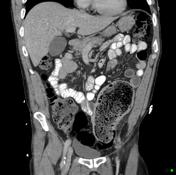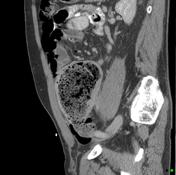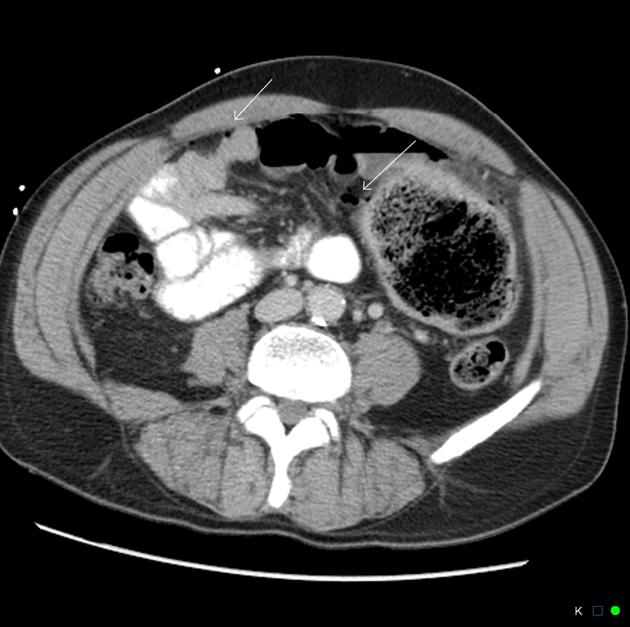Presentation
Past history of constipation. Now abdominal pain ? diverticulitis
Patient Data
Age: 65 years
Gender: Male
From the case:
Stercoral ulcer and perforation of the sigmoid colon




Download
Info

Large focal collection of feces in the sigmoid without signs of obstruction or diverticular disease but with local wall thickening in the sigmoid and signs of a local perforation by way of free intraperitoneal gas (arrow).
Case Discussion
Stercoral ulcer is thought to be an ischemic phenomenon due to the pressure effect of a large, hard fecal bolus on the bowel wall, i.e. pressure necrosis. If prolonged and severe, the colon can perforate.




 Unable to process the form. Check for errors and try again.
Unable to process the form. Check for errors and try again.